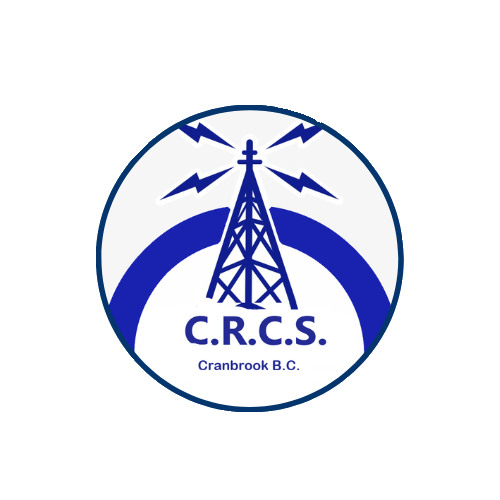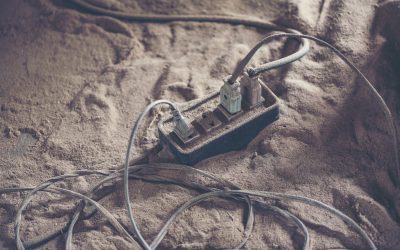When you first dive into the world of amateur radio, there are some words and tools that come up again and again. One of the most important—yet often misunderstood—topics is ferrites. If you’ve been chasing down interference, trying to quiet noisy signals, or simply curious about how to improve your station’s performance, this Ferrites 101 guide will help you understand what ferrites are, how they work, and which mix to choose for your specific application.
What Are Ferrites?
Ferrites are ceramic-like compounds made of iron oxide blended with other metals such as manganese, zinc, or nickel. These combinations are designed to interact with electromagnetic energy in specific ways, making ferrites incredibly useful for ham radio applications.
Think of ferrites as “traffic cops” for unwanted radio frequency (RF) noise. They don’t eliminate your signal—they reduce or block interference, common-mode currents, and other gremlins that cause problems in your shack.
Why Ferrites Matter in Ham Radio
Before diving deeper into Ferrites 101, it’s worth asking: why should amateur radio operators care?
-
RFI Suppression: Ferrites are a go-to solution for reducing radio frequency interference (RFI) from household electronics.
-
Cleaner Transmissions: By reducing unwanted RF, ferrites help ensure your signal isn’t distorted or radiating where it shouldn’t.
-
Better Reception: They can improve your noise floor by suppressing interference picked up by your antennas or feedlines.
-
Compliance: In some cases, ferrites are necessary to meet Part 15 FCC rules regarding interference.
If you’ve ever heard complaints from neighbors about their speakers buzzing during your QSOs, ferrites are often the fix.
Ferrites 101: Mix Numbers Explained
One of the trickiest parts about ferrites is the numbering system. Mix numbers (like Mix 31, Mix 43, Mix 61, etc.) refer to the material composition of the ferrite, which dictates its performance over different frequency ranges.
Here’s a breakdown to simplify things:
-
Mix 31: Broad coverage from 1 MHz to 300 MHz. Excellent for HF through low VHF noise suppression. Commonly used for general RFI fixes.
-
Mix 43: Best from about 25 MHz to 300 MHz. Useful for VHF/UHF applications, coax chokes, and EMI suppression in higher ranges.
-
Mix 61: Optimized for 200 MHz to 2 GHz. Handy for 2m, 70cm, and other microwave-band applications.
-
Mix 77: Great for low frequencies, from 150 kHz up to about 10 MHz. Useful for power supplies, audio, and very-low-frequency noise.
When in doubt, Mix 31 is often the best all-around choice for HF.
Common Ferrite Forms
Ferrites come in several shapes and sizes, each with specific uses in ham radio:
-
Ferrite Beads
-
Small cylindrical pieces you slip over wires or coax.
-
Great for quick fixes on power cords, USB cables, or small leads.
-
-
Ferrite Snap-On Cores
-
Split in half with a hinge for easy installation.
-
Useful for retrofitting existing cables without disconnecting them.
-
-
Ferrite Toroids (Donuts)
-
Circular ferrites where you wind coax or wire through multiple turns.
-
Excellent for building choke baluns, power supply filters, or custom noise suppressors.
-
-
Ferrite Rods
-
Long, narrow ferrites often found in AM broadcast radios.
-
More specialized but useful for experimental builds.
-
Choosing the Right Mix for the Right Job
Here’s where Ferrites 101 becomes practical. Let’s match ferrite mixes and forms with common amateur radio scenarios.
Scenario 1: Reducing RFI in the Shack
If your HF rig causes interference with your computer speakers or TV, clip-on Mix 31 snap-on cores around the device power cords and signal cables. Mix 31 works well because most ham HF interference lives in the 1–30 MHz range.
Scenario 2: Building a Coax Choke for HF
A ferrite toroid with Mix 31 is the best choice. Wrap your coax through 7–10 turns on a large toroid to create a choke that suppresses common-mode currents and keeps RF where it belongs—on the antenna.
Scenario 3: VHF/UHF Operation
If you’re active on 2 meters or 70 cm, go with Mix 43 or Mix 61 snap-ons for your coax and accessory cables. These mixes perform better at higher frequencies.
Scenario 4: Noise from Power Supplies
Switching power supplies are notorious for generating RFI. Wrapping the DC leads around Mix 77 toroids can tame low-frequency noise before it radiates through your system.
Scenario 5: Portable and Field Operations
When building portable stations, space is limited. A few snap-on Mix 31 ferrites can quickly suppress RF issues without the need for bulky toroids.
DIY Projects with Ferrites
Part of the fun of amateur radio is building your own solutions. Ferrites fit perfectly into the DIY mindset. Here are a few projects to try:
-
Choke Balun: Wind coax around a large Mix 31 toroid to create a simple, effective 1:1 choke balun for your dipole.
-
Noise Filter for a Power Supply: Wrap the DC output wires through a Mix 77 toroid several times.
-
Portable Ferrite Kit: Keep a small bag of snap-on Mix 31 ferrites in your go-bag for field day or SOTA activations.
Mistakes to Avoid
Even in Ferrites 101, it’s important to call out common errors:
-
Wrong Mix: Using Mix 43 for HF RFI suppression won’t give the same results as Mix 31. Always check the frequency range.
-
Too Few Turns: One pass of coax through a toroid may not be enough. More turns = more suppression.
-
Random Placement: Don’t just throw ferrites on cables at random. Target common entry points for RF—like coax, power leads, and USB cables.
Ferrites in Real Life: Case Studies
-
Case 1: An operator had reports of RFI into his neighbor’s stereo whenever he transmitted on 20 meters. By snapping Mix 31 ferrites onto the stereo’s speaker wires, the interference disappeared.
-
Case 2: During Field Day, a club’s digital station experienced severe RF feedback. Winding coax through a Mix 31 toroid eliminated the issue and kept the station on the air.
-
Case 3: A ham running a switching power supply saw a high noise floor on 40 meters. Wrapping the supply leads around a Mix 77 core significantly reduced the hash.
Ferrites may look like simple chunks of gray ceramic, but they are one of the most powerful tools in a ham’s toolkit. Whether you’re solving RFI problems, improving your antenna system, or keeping your shack quiet, choosing the right ferrite mix for the job is essential.
By understanding the basics in this Ferrites 101 guide, you’ll not only reduce headaches but also improve the performance and enjoyment of your amateur radio hobby.
Next time you’re troubleshooting noise or building a new station accessory, remember: the right ferrite, in the right place, can make all the difference.




